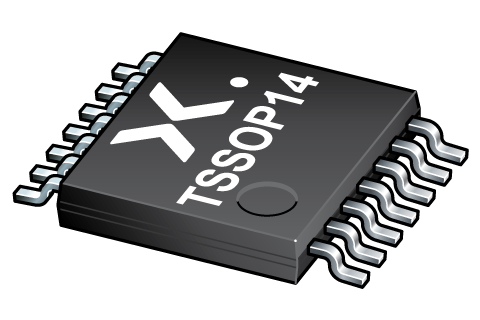
Register once, drag and drop ECAD models into your CAD tool and speed up your design.
Click here for more information74LV4066DB
Quad bilateral switches
The 74LV4066 is a quad single pole, single throw analog switch. Each switch features two input/output terminals (nY and nZ) and an active HIGH enable input (nE). When nE is LOW, the analog switch is turned off. Digital inputs include clamp diodes. This enables the use of current limiting resistors to interface inputs to voltages in excess VCC.
Alternatives
Features and benefits
Wide supply voltage range from 1.0 to 6.0 V
CMOS low power dissipation
Direct interface with TTL levels
Latch-up performance exceeds 100 mA per JESD 78 Class II Level B
Complies with JEDEC standards:
JESD8-7 (1.65 V to 1.95 V)
JESD8-5 (2.3 V to 2.7 V)
JESD8C (2.7 V to 3.6 V)
JESD36 (4.5 V to 5.5 V)
Typical VOLP (output ground bounce): < 0.8 V at VCC = 3.3 V and Tamb = 25 °C
Very low ON-resistance:
60 Ω (typical) at VCC = 2.0 V
35 Ω (typical) at VCC = 3.0 V
25 Ω (typical) at VCC = 4.5 V
ESD protection:
HBM JESD22-A114F exceeds 2000 V
MM JESD22-A115-A exceeds 200 V
Specified from -40 °C to +80 °C and from -40 °C to +125 °C
参数类型
| 型号 | Product status | Package name |
|---|---|---|
| 74LV4066DB | End of life | SSOP14 |
PCB Symbol, Footprint and 3D Model
| Model Name | 描述 |
|---|---|
|
|
封装
下表中的所有产品型号均已停产 。
| 型号 | 可订购的器件编号,(订购码(12NC)) | 状态 | 标示 | 封装 | 外形图 | 回流焊/波峰焊 | 包装 |
|---|---|---|---|---|---|---|---|
| 74LV4066DB | 74LV4066DB,112 (935170200112) |
Obsolete | no package information | ||||
| 74LV4066DB,118 (935170200118) |
Obsolete | ||||||
环境信息
下表中的所有产品型号均已停产 。
| 型号 | 可订购的器件编号 | 化学成分 | RoHS | RHF指示符 |
|---|---|---|---|---|
| 74LV4066DB | 74LV4066DB,112 | 74LV4066DB |
|
|
| 74LV4066DB | 74LV4066DB,118 | 74LV4066DB |
|
|
Series
支持
如果您需要设计/技术支持,请告知我们并填写 应答表 我们会尽快回复您。
模型
| 文件名称 | 标题 | 类型 | 日期 |
|---|---|---|---|
| lv | lv Spice model | SPICE model | 2013-05-07 |
PCB Symbol, Footprint and 3D Model
| Model Name | 描述 |
|---|---|
|
|
How does it work?
The interactive datasheets are based on the Nexperia MOSFET precision electrothermal models. With our interactive datasheets you can simply specify your own conditions interactively. Start by changing the values of the conditions. You can do this by using the sliders in the condition fields. By dragging the sliders you will see how the MOSFET will perform at the new conditions set.

